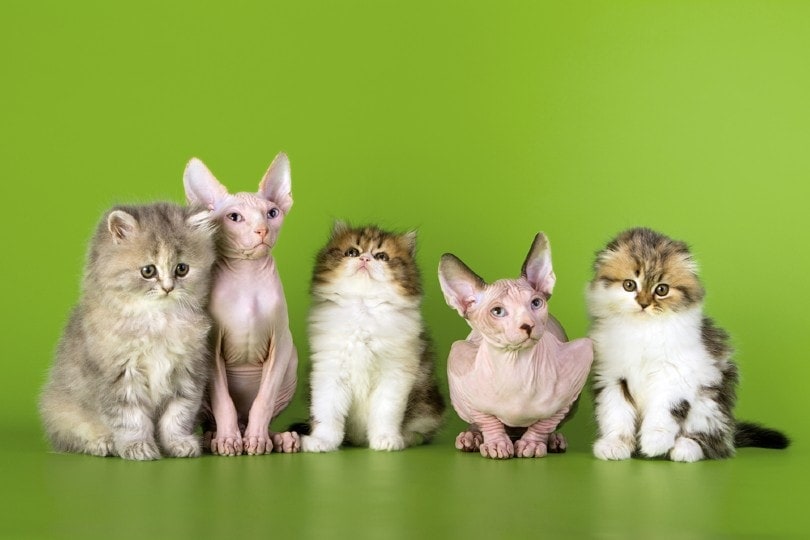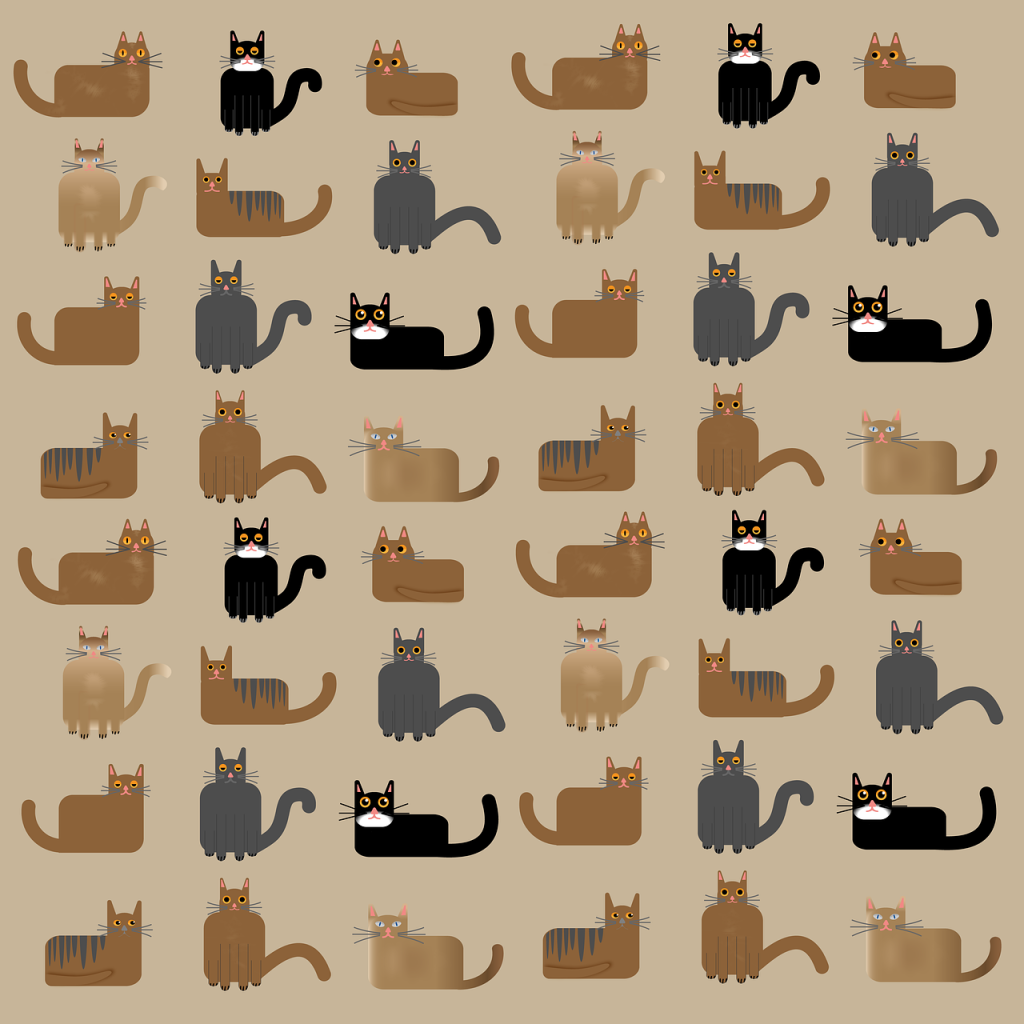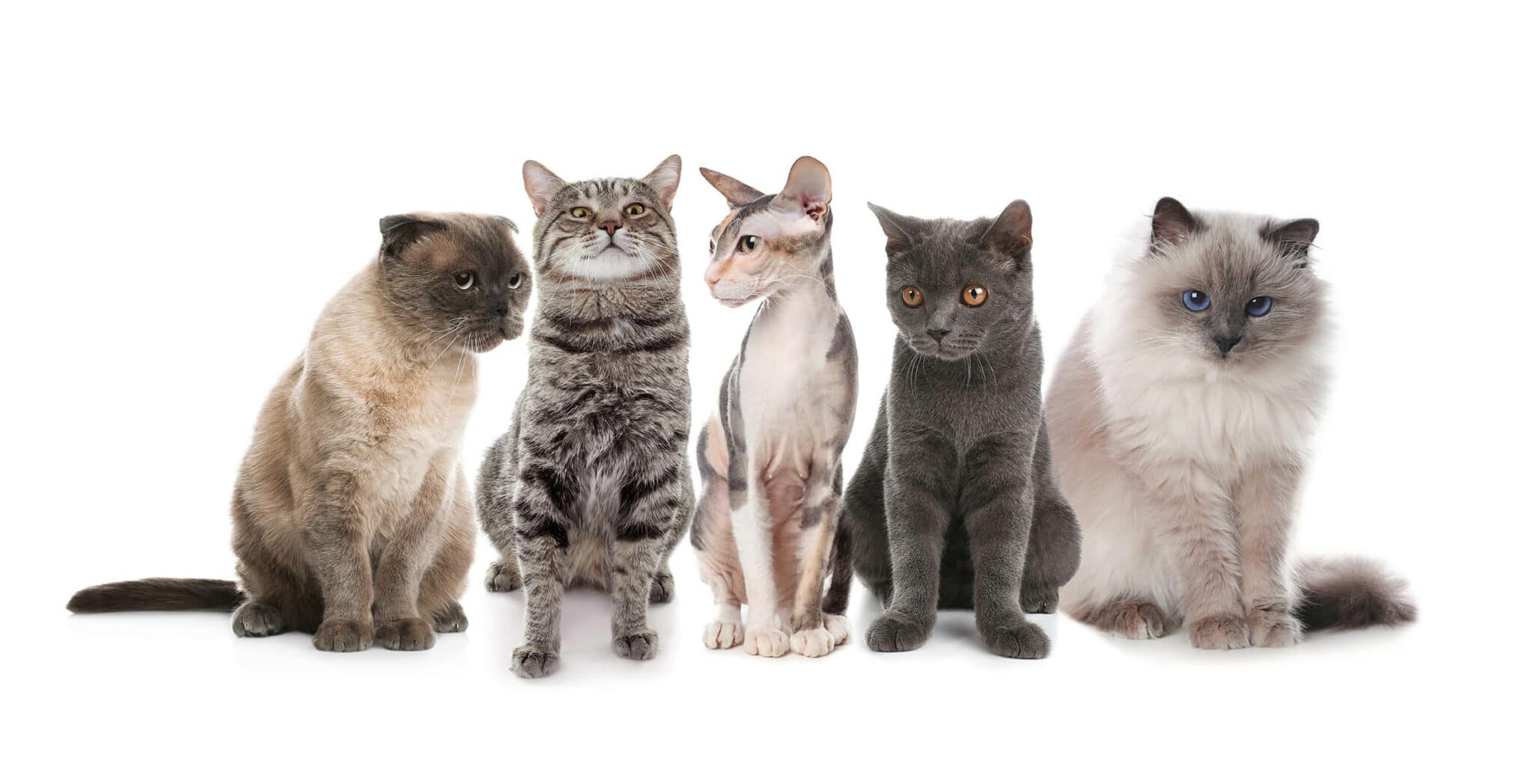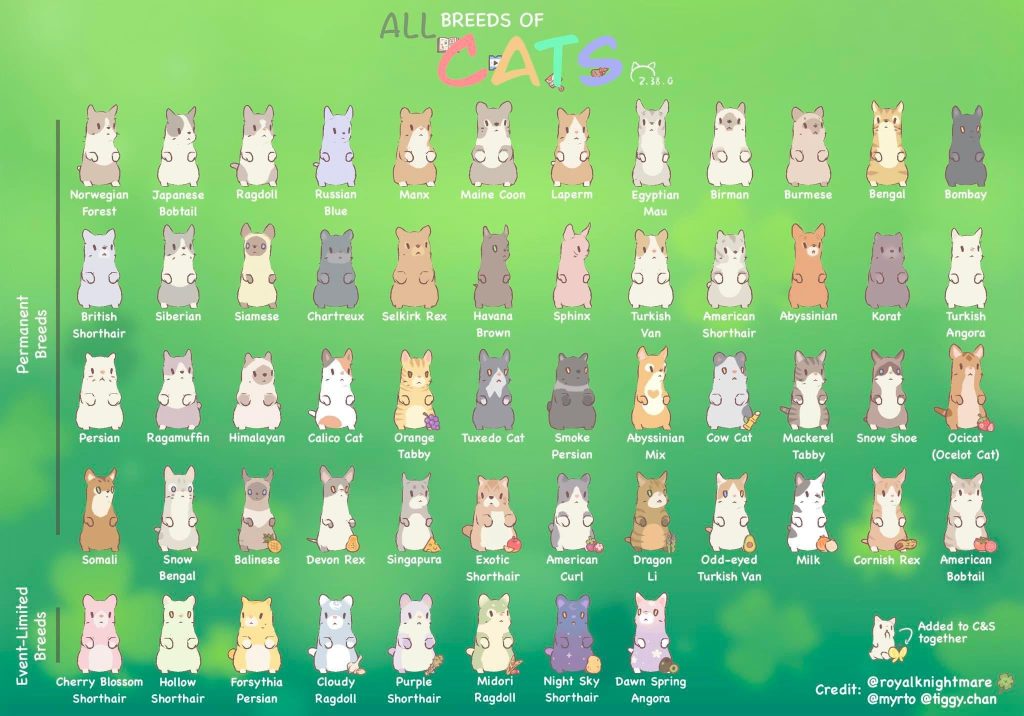Have you ever wondered just how many cat breeds there are in 2024? If you’re a cat lover or simply curious about these fascinating creatures, you’re in for a treat.
Cats come in a dazzling array of breeds, each with its own unique charm and personality. From the fluffy Maine Coon to the sleek Siamese, there’s a cat breed out there that might just steal your heart. Imagine the joy of discovering a breed you never knew existed.
Think about how this knowledge can enrich your understanding and appreciation of cats. Knowing about different breeds can not only help you find the perfect feline companion but also enhance your conversations with fellow cat enthusiasts. Stay with us as we dive into the world of cat breeds, uncovering the latest updates and surprising facts. You’ll find yourself captivated by the diversity and beauty of these animals, and who knows, you might just find your new furry friend along the way. Ready to explore? Let’s get started!
Popular Cat Breeds
Discover the fascinating world of cats with over 70 recognized breeds in 2024. Each breed offers unique traits and characteristics. From fluffy Persians to sleek Siamese, the variety is astounding.
As you dive into the world of feline companions, one question might linger in your mind: how many cat breeds are there in 2024? The answer is fascinating, with a rich tapestry of over 70 recognized breeds. Within this diverse world, certain breeds stand out for their popularity. These popular cat breeds capture the hearts of cat lovers worldwide, each bringing unique traits and quirks to the table. Let’s explore some of the traditional favorites and those rising stars that are capturing attention.
Traditional Favorites
Some cat breeds have an enduring charm that makes them timeless favorites. The Siamese, known for its striking blue eyes and vocal nature, continues to be a beloved choice. Their social and affectionate demeanor makes them excellent companions. Persians, with their luxurious coats and gentle disposition, have long held a place in cat fancier hearts. They may require a bit more grooming, but their calm presence is worth the effort. Then there’s the Maine Coon, often referred to as the “gentle giant” of the cat world. Their playful yet laid-back nature makes them an excellent addition to families. Have you ever been enchanted by a Maine Coon’s tufted ears and bushy tail?
Rising Stars
While traditional breeds hold a special place, new stars are emerging on the cat scene. The Bengal, with its wild, leopard-like appearance, is gaining popularity rapidly. Its energetic and playful nature suits active households. The Sphynx, often recognized by its hairless body, is another breed capturing attention. Despite their lack of fur, they are known for being warm and affectionate, almost like living hot water bottles. And let’s not forget the Scottish Fold, with its unique folded ears and round face. This breed has become a social media darling, capturing the hearts of many with their adorable appearances. Each breed, whether a traditional favorite or a rising star, offers something unique. What qualities do you seek in a feline friend?
Rare And Exotic Breeds
Discover the fascinating world of rare and exotic cat breeds. As of 2024, cat enthusiasts can explore over 70 unique breeds. Each breed showcases distinct traits, captivating personalities, and diverse appearances.
In 2024, the world of cat breeds is more fascinating than ever, with a plethora of rare and exotic breeds capturing the hearts of feline enthusiasts. These unique cats are not just about looks; they bring with them a set of distinct characteristics and stories that make them stand out. Whether you’re a dedicated cat lover or just curious about these extraordinary creatures, understanding their appeal can deepen your appreciation for the diversity within the feline kingdom.
Unique Characteristics
Rare and exotic cat breeds often possess features that set them apart from more common breeds. Take the Peterbald, for instance. This breed is known for its hairless body and affectionate nature, making it a standout choice for those seeking a low-maintenance pet with a big personality. Some breeds, like the Savannah cat, are a cross between domestic cats and wild African servals. This gives them a striking, wild appearance and an adventurous spirit. They need plenty of space and stimulation, making them a good fit for active households. Others, such as the Lykoi or “werewolf cat,” have a sparse coat and unique facial features that resemble a mythical creature. Their playful and friendly demeanor, however, makes them anything but intimidating.
Global Distribution
The distribution of rare cat breeds varies significantly around the globe. The Turkish Van, for instance, hails from the region of Lake Van in Turkey. It’s known for its love of water and distinctive piebald coat pattern. These cats are cherished in their homeland but are rarely seen elsewhere. In contrast, the Norwegian Forest Cat, with its thick, water-resistant coat, is a common sight in Norway but less so in warmer climates. This breed is perfect for those living in colder regions who want a cat that thrives in such environments. Some breeds, like the Bengal, have gained popularity worldwide due to their striking appearance and energetic nature. However, their wild ancestry can make them a challenge for first-time cat owners. Have you ever wondered why certain breeds remain rare despite their unique appeal? The answer often lies in their specific care needs, breeding restrictions, and sometimes, their quirky personalities that might not suit everyone. By exploring these rare and exotic cat breeds, you not only discover new facets of feline beauty but also gain insights into what makes each breed special. What’s your favorite rare cat breed, and why does it capture your interest?
Newly Recognized Breeds
Each year, the world of cats evolves. New breeds come into the spotlight. These breeds catch the interest of cat enthusiasts. In 2024, some breeds have gained recognition. They have unique features and charming personalities. Let’s dive into these newly recognized breeds.
Recent Additions
The cat world sees fresh faces. These breeds are recent additions. They have been acknowledged by cat associations. Their traits set them apart from the rest. One such breed is the Toyger. It resembles a tiny tiger with its striking stripes. Another newcomer is the Lykoi, known as the “wolf cat.” Its coat gives it a wild appearance.
These breeds bring diversity to the cat community. They enrich our understanding of feline beauty. Cat lovers are thrilled by these additions. Each breed offers something new. They add excitement and variety to the cat world.
Breeds Gaining Recognition
Some breeds are gaining recognition slowly. They are not new but are now getting attention. The Donskoy cat is one example. It has a hairless body and a gentle nature. Another is the Nebelung, famous for its silky fur. These breeds have been around for a while. Their charm is now being noticed globally.
Recognition of these breeds grows each year. Their unique traits captivate cat lovers. They represent the evolving diversity of cat breeds. As they gain recognition, their popularity increases. These breeds are now part of the cat lover’s world.

Credit: articles.hepper.com
Factors Influencing Breed Recognition
Recognizing cat breeds isn’t as straightforward as it might seem. Various factors influence which breeds are officially recognized, and these factors can change over time. You might wonder why some breeds are celebrated while others are not. Let’s dive into the key elements that play a crucial role in breed recognition.
Genetic Research
Advancements in genetic research have significantly impacted breed recognition. Scientists can now identify distinct genetic markers that differentiate one breed from another. This helps in understanding the uniqueness of each breed.
Imagine you’re a cat lover who adores the Maine Coon. Through genetic research, you can appreciate its specific traits that set it apart from other breeds. This scientific backing ensures that breeds are not just classified based on looks but also on genetics.
Wouldn’t it be fascinating to know if your cat carries genes similar to a wildcat? Genetic research can offer insights into such intriguing connections, influencing how breeds are recognized.
Breed Standards
Breed standards define the specific characteristics that make a breed unique. These standards are created by cat associations and are critical for breed recognition. They outline everything from physical traits to temperament.
Take the Siamese cat, for example. Its standards include features like a sleek body, almond-shaped eyes, and distinctive color points. These standards ensure consistency and help breeders maintain the integrity of the breed.
Have you ever considered how breed standards can affect your choice of a pet? They offer a guideline for what to expect, ensuring your new feline friend matches your lifestyle.
Breed recognition is a dynamic process influenced by genetic research and breed standards. Understanding these factors helps you appreciate the diversity of cat breeds. Next time you cuddle your furry companion, remember the complex criteria that define their breed’s unique identity.
Impact Of Breeding On Diversity
The diversity among cat breeds is a fascinating aspect of the feline world, especially as we look into the year 2024. Breeding has played a significant role in shaping this diversity, introducing new traits and characteristics while also influencing the population of rare breeds. If you’ve ever wondered how breeding impacts the variety of cats you see today, you’re not alone. As breeders strive to maintain and expand certain traits, the landscape of cat breeds continues to evolve. But what does this mean for the preservation of rare breeds, and what ethical considerations should be taken into account?
Preservation Of Rare Breeds
Rare cat breeds are like hidden gems in the world of felines. Think of the beautiful Turkish Van or the elegant Korat; these breeds offer unique characteristics not found in more common breeds. Preservation efforts are crucial to maintaining their presence in the cat community. Without intentional breeding programs, these rare breeds might face the risk of extinction. Breeders must focus on creating balanced breeding strategies that ensure genetic diversity without compromising the unique traits of these breeds.
Consider the role you might play in preserving these rare breeds. Are you curious about adopting a less common breed? Your choice could contribute to the survival of these unique cats. By choosing to adopt or support rare breeds, you help sustain their existence for future generations.
Ethical Considerations
Breeding cats is not just a scientific endeavor; it’s a moral responsibility. Ethical considerations must be at the forefront of breeding practices. Breeders face critical choices that impact the health and welfare of cats. Issues such as overbreeding, genetic health problems, and animal welfare are paramount concerns. Breeders should ensure that their practices do not lead to negative consequences for the cats involved.
Have you ever wondered what ethical breeding looks like? It involves transparency, responsibility, and a commitment to the well-being of each cat. Breeders should prioritize the health and happiness of cats, ensuring that they live fulfilling lives. As a cat lover, you can support ethical breeders and contribute to the welfare of feline friends.
As you explore the diverse world of cat breeds, consider how breeding impacts diversity. How do your choices as a cat enthusiast affect the preservation and ethical treatment of these breeds? The decisions you make can shape the future of feline diversity, making the world a richer place for cats and humans alike.

Credit: catsofaustralia.com
Future Trends In Cat Breeds
Exploring cat breeds in 2024 reveals fascinating insights. The number of recognized cat breeds continues to grow with genetic advancements. Breeders focus on unique characteristics, leading to increased diversity and options for cat lovers worldwide.
In 2024, the world of cat breeds continues to evolve, offering exciting possibilities for cat enthusiasts and breeders alike. With advancements in genetics and a growing interest in unique feline companions, the landscape of cat breeds is rapidly changing. Whether you’re a cat lover or simply curious about the future of feline friends, understanding these trends can help you stay ahead of the curve.
Potential New Breeds
The future might bring us some new and fascinating cat breeds. Breeders are constantly experimenting with genetics to create unique traits and characteristics. For example, the “Lykoi,” also known as the “werewolf cat,” is a recent addition that has gained popularity due to its unusual appearance. Imagine a cat that resembles a mini-panther or even one with fur that changes color with the seasons. These possibilities are not far-fetched with today’s technology and creativity. What kind of cat would you love to see in the future?
Changing Preferences
As people’s lifestyles and living spaces change, so do their preferences for pets. More people are living in urban areas with limited space, influencing their choice of cat breeds. Smaller, more adaptable breeds might become more popular. People are also becoming more interested in hypoallergenic breeds due to increasing allergy concerns. Breeds like the Siberian, known for its lower allergen levels, might see a rise in demand. Have you ever considered how your environment influences your choice in pets? The future of cat breeds is as diverse as the cats themselves. Staying informed about these trends can help you make better decisions when choosing your next feline friend. What future trend excites you the most? Engage with fellow cat lovers and share your thoughts.

Credit: www.catster.com
Frequently Asked Questions
How Many Breeds Of Cats Are There?
There are about 71 recognized cat breeds globally. The International Cat Association and Cat Fanciers’ Association each recognize different numbers. Breeds vary in size, appearance, and personality. Researching the specific breed can help in understanding its traits and care needs.
What Is The 1 Cat Breed In The World?
The 1 cat breed in the world is the Persian cat. Known for its long, luxurious fur and gentle temperament, Persians are highly popular among cat enthusiasts globally. They require regular grooming to maintain their coat and are cherished for their affectionate nature.
How Many Different Cat Species Are There?
There are 41 distinct species of cats worldwide. These range from domestic cats to large wild cats like lions. Each species has unique characteristics and adaptations. Cat species are found on every continent except Antarctica.
Are There 73 Cat Breeds?
Yes, there are 73 officially recognized cat breeds. The International Cat Association acknowledges these breeds. Each breed has unique characteristics. Cat lovers can choose from a diverse range of cats. Always verify breed standards from reputable organizations.
Conclusion
Exploring cat breeds is fascinating and diverse. Over 70 breeds enchant us in 2024. Each breed has unique traits and charms. Some are playful, others calm and gentle. Knowing about these breeds helps in choosing a pet. It’s also a journey into the world of cats.
Their beauty, grace, and variety captivate many. Whether you prefer a fluffy Persian or a sleek Siamese, there’s a cat for everyone. Stay curious and explore more about these amazing animals. Cats truly add joy to our lives. Their diversity enriches our world.
